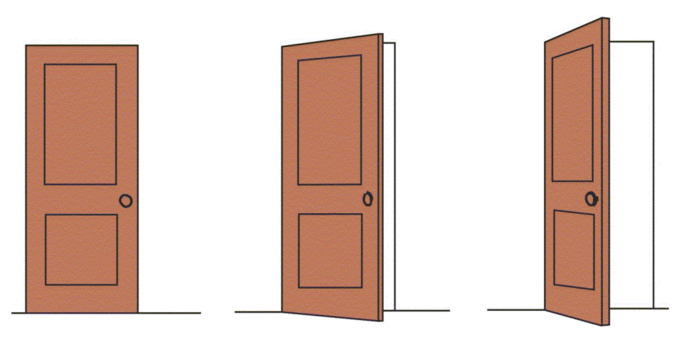Have you ever noticed how snow looks just as "white" in the middle of the night under dim moonlight as it does during the day under the bright sun? When you walk away from an object, have you noticed how the object gets smaller in your visual field, yet you know that it actually has not changed in size? Thanks to perceptual constancy, we have stable perceptions of an object's qualities even under changing circumstances.
Perceptual constancy is the tendency to see familiar objects as having standard shape, size, color, or location, regardless of changes in the angle of perspective, distance, or lighting. The impression tends to conform to the object as it is assumed to be, rather than to the actual stimulus presented to the eye. Perceptual constancy is responsible for the ability to identify objects under various conditions by taking these conditions into account during mental reconstitution of the image.
Even though the retinal image of a receding automobile shrinks in size, a person with normal experience perceives the size of the object to remain constant. One of the most impressive features of perception is the tendency of objects to appear stable despite their continually changing features: we have stable perceptions despite unstable stimuli. Such matches between the object as it is perceived and the object as it is understood to actually exist are called perceptual constancies.
Visual Perceptual Constancies
There are many common visual and perceptual constancies that we experience during the perception process.
Size Constancy
Within a certain range, people's perception of a particular object's size will not change, regardless of changes in distance or size change on the retina. The perception of the image is still based upon the actual size of the perceptual characteristics. The visual perception of size constancy has given rise to many optical illusions.

The Ponzo illusion
This famous optical illusion uses size constancy to trick us into thinking the top yellow line is longer than the bottom; they are actually the exact same length.
Shape Constancy
Regardless of changes to an object's orientation, the shape of the object as it is perceived is constant. Or, perhaps more accurately, the actual shape of the object is sensed by the eye as changing but then perceived by the brain as the same. This happens when we watch a door open: the actual image on our retinas is different each time the door swings in either direction, but we perceive it as being the same door made of the same shapes.

Shape constancy
This form of perceptual constancy allows us to perceive that the door is made of the same shapes despite different images being delivered to our retinae.
Distance Constancy
This refers to the relationship between apparent distance and physical distance. An example of this illusion in daily life is the moon. When it is near the horizon, it is perceived as closer to Earth than when it is directly overhead.
Color Constancy
This is a feature of the human color perception system that ensures that the color of an object remains similar under varying conditions. Consider the shade illusion: our perception of how colors are affected by bright light versus shade causes us to perceive the two squares as different colors. In fact, they are the same exact shade of gray.

Checker-shadow illusion
Color constancy tricks our brains into seeing squares A and B as two different colors; however, they are the exact same shade of gray.
Auditory Perceptual Constancies
Our eyes aren't the only sensory organs that "trick" us into perceptual constancy. Our ears do the job as well. In music, we can identify a guitar as a guitar throughout a song, even when its timbre, pitch, loudness, or environment change. In speech perception, vowels and consonants are perceived as constant even if they sound very different due to the speaker's age, sex, or dialect. For example, the word "apple" sounds very different when a two year-old boy and a 30 year-old woman say it, because their voices are at different frequencies and their mouths form the word differently... but we perceive the sounds to be the same. This is thanks to auditory perceptual constancy!